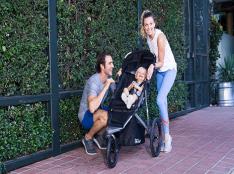Lunch Box Food Safety
Here are a few lunch safety tips from experts at the Institute of Food Technologists:Containers and Cleaning
- The first step to good food safety is to wash your hands with soap and warm water for at least 20 seconds before handling food. Wash cutting boards, dishes, and utensils with hot, soapy water after preparing each food item, and be sure to sanitize countertops after making lunch.- Rinse fresh fruits and vegetables under running water before packing them in a lunch container.
- To avoid cross-contamination, don't reuse packaging materials such as paper or plastic bags, food wraps and aluminum foil.
- Use an insulated container for hot foods like chili, soups and stews. Fill the container with boiling water, let it stand for a few minutes, and then add hot food. Keep the container closed until lunchtime to help minimize bacterial contamination and growth.
- Rinse out soft lunch boxes with water (to remove food debris), spray with a store-bought chlorine sanitizer or soap, rinse, and let dry.
- Throw away soft lunch boxes if the liner is cracked or broken.
More: Back to School: 8 Alternatives to After School Snacks
Temperature Control
- Perishable foods that won't be kept refrigerated should be kept cold by using freezer gel packs or a frozen juice carton.- Insulated, soft-sided lunch boxes or bags are best for keeping food cold, but metal or plastic lunch boxes and paper bags can also be used. If using paper lunch bags, create layers by double bagging to help insulate the food.
- Harmful bacteria can multiply rapidly at temperatures between 40 and 140° F. Be sure to transport food with an ice source and refrigerate upon destination.
- Studies show that bacteria growth begins after about four hours at room temperature, or less (around an hour) in temperatures above 90 degrees.
More: Back to School: Healthy Desserts For Your Child's Lunchbox
Leftovers and storing food
- Preparing food the night before and storing it in the refrigerator will help keep it cold longer.- Discard of all used food packaging and paper bags after eating. Throw away perishable leftovers unless they can be safely chilled immediately after lunch and upon returning home. Better yet, pack only the amount of perishable food that will be eaten at lunch. With no extra food to carry home, you'll avoid the inconvenience of having to keep leftovers at the correct temperature on the commute home.
- When storing leftover food in the refrigerator, use smaller containers for hot food. A storage container two inches deep or less is ideal for chilling food quickly.
- Label storage containers with the date you packed the container, so you know when it is time to either eat or dispose of it.
- When using the microwave oven to reheat lunches, cover food to hold in moisture and promote safe, even heating. Reheat leftovers to at least 165 °F, ensuring that they are steaming hot. Cook frozen convenience meals according to package instructions.
- 2
- of
- 3









Discuss This Article